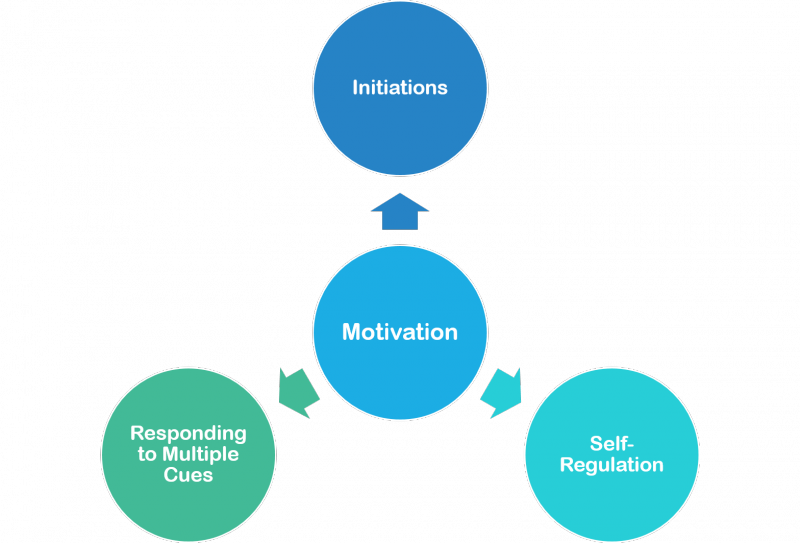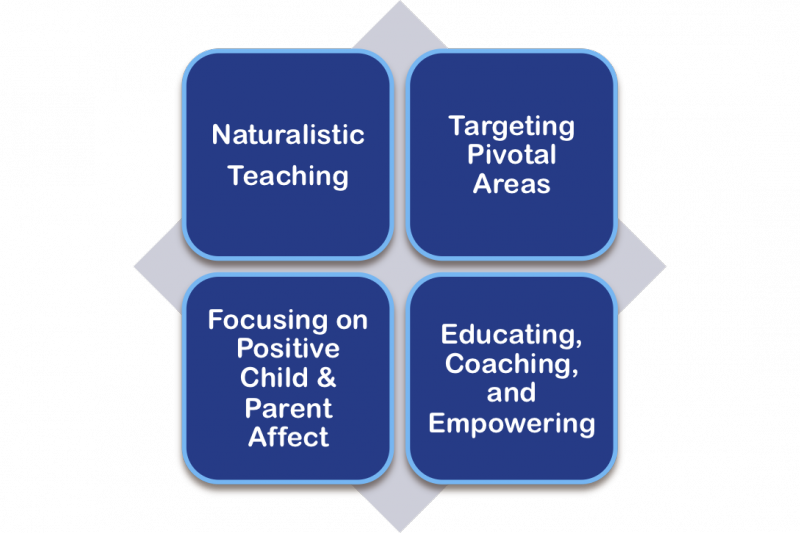EBP Overview
![]()
After reviewing this overview section, you should be able to answer the following questions about this practice:
What is Pivotal Response Treatment?
Why use Pivotal Response Treatment?
Where Can You Use Pivotal Response Treatment?
What is the Evidence-base for Pivotal Response Treatment?
What is Pivotal Response Treatment (PRT)?
![]()
Pivotal Response Treatment (PRT) is a naturalistic intervention based on the principles and practices of applied behavior analysis (ABA) and developmental approaches. PRT shares many instructional practices found in other well-researched, naturalistic behavior interventions, such as incidental teaching, enhanced milieu teaching, and naturalistic aspects of applied verbal behavior therapy (Allen & Cowan, 2008).
- PRT focuses on improving children’s motivation during learning and socialization (Koegel et al., 2006).
- PRT improves core behaviors, such as social communication, and is ideal for use with toddlers with ASD.
- PRT is also a child and family-centered intervention and capitalizes on child interests and initiations in everyday environments and within daily routines. It is particularly helpful for improving communication, language, play, and social behaviors.

Motivation may be the central pivotal area. Creating motivational PRT opportunities provides the foundation for implementing the other pivotal areas, as well as improving specific meaningful goals and objectives.
Select a pivotal learning area to read more:
Key Features and Guiding Principles of PRT
 Select a link below to read more:
Select a link below to read more:
Naturalistic Teaching
Use naturalistic teaching to improve developmentally appropriate skills.
When the motivational components of PRT are combined, children are taught through social interactions that are as close as possible to more typical learning experiences. Parents and practitioners target pivotal areas and specific developmentally appropriate skills:
- in naturally occurring contexts (e.g., taking turns during play, during daily routines in “everyday settings” at home and in the community)
- with natural stimuli (for example, favorite toys or activities, more typical and varied instructional antecedents, varied learning opportunities or tasks)
- with natural change agents (For example, parents, siblings, respite workers, center-based educators, and practitioners)
- with natural contingencies (For example, loose teaching contingencies based on reinforcing attempts; using natural/direct reinforcers; contingent recasts of child communication, Koegel & Koegel, 2012.)
Skills or behaviors selected are developmentally appropriate and individualized, and developed in collaboration with parents and team members.
What specific behaviors or skills are targeted in PRT for infants and toddlers?
|
|
|
For more information related to naturalistic teaching, see the Naturalistic Intervention learning module and Allen and Cowan’s (2008) chapter on naturalistic teaching procedures.
Target Pivotal Areas
Target pivotal areas, particularly the toddler’s motivation to learn and engage.
Pivotal areas are suspected, through research, to produce a wider range of changes (e.g., collateral effects) compared to teaching many skills in isolation, one right after another. Also referred to as pivotal responses, pivotal behaviors, and/or behavioral cusps, pivotal areas cause a “ripple effect,” whereby a direct improvement in a pivotal area can lead to indirect improvements in many other skills.
Focus on positive child and parent affect
PRT components can improve toddler happiness, interest, enthusiasm, and overall
behavior.
Learning and interaction should be fun! These improvements help make PRT an acceptable and feasible intervention for parents and practitioners to implement. By implementing PRT motivational components, toddlers are learning and they are enjoying social interaction and intervention more often. Likewise, active parent involvement in interventions improves parent affect and confidence, and decreases parent stress (Brookman-Frazee, 2004). Positive affect is “contagious” in that happy and engaged toddlers can lead to happy and engaged parents, which in turn increases and maintains the toddler’s positive affect, and so on. It is important that sessions are conducted in a way that is fun and interactive for both toddlers and parents. PRT motivational components contribute to improving child and parent affect.
Educate, coack, and empower parents, family members, and practitioners or teachers
Significant individuals in the toddler’s life, particularly parents, are the primary
individuals carrying out PRT throughout the toddler’s day in natural, everyday
environments.
Educating and coaching parents is interactive in PRT, and involves a combination of didactic instruction, modeling by the clinician, practice by the parents, and immediate “live” feedback from the parent educator. This means that, during parent education sessions, both parents and practitioners are working together in a collaborative manner with a toddler. Variations of this PRT parent education model exist (Steiner, Koegel, Keogel, & Ence, 2012). For instance, group parent training formats and self-directed DVD parent training programs in PRT can also be used successfully. However, it is essential that parents and practitioners actively practice the techniques while receiving on-going feedback.
Emphasizing collaboration and parent empowerment, PRT parent education sessions incorporate parental expertise in setting up their toddler’s program (e.g., planning the toddler’s goals/objectives) as well as implementing the intervention. For example, parents help to pick out toys or what words to teach to the toddler during play. Many parents can obtain a high degree of confidence, reduced stress, and high levels of treatment fidelity (i.e., they can implement PRT well) through this approach. This parent education model is a cornerstone to PRT, but can apply to various natural change agents, including early childhood educators, practitioners, respite workers, siblings, and relatives.
Why Use PRT?
![]()
The potential advantages of using PRT over more traditional models include:
- increased generalization of acquired skills
- increased spontaneity and independence
- efficiency through collateral effects and “around-the-clock” implementation
- child- and family-friendly techniques that can be feasibly implemented
- improved engagement, behavior, and child affect during intervention
- improved parent affect and decreased parent stress
Koegel & Koegel, 1995; Koegel & Koegel, 2006
Where Can PRT Be Used and By Whom?
![]()
As a naturalistic intervention, parents and practitioners apply PRT in everyday settings, throughout the toddler’s day, during daily routines, and play. PRT has been evaluated in home, clinic, and community settings, with a variety of natural change agents. Teaching in varied everyday environments, by natural intervention agents such as parents, has been demonstrated to promote generalization and maintenance of skills. Emphasis on rapid generalization is an important facet of PRT.
Examples of specific settings at home and in the community:
- Morning routines
- Meal and snack times
- Play at the park
- Going for a walk
- Shopping at the mall
- Eating at a restaurant
- Bath time routines
- Bed time routines
- Play time with siblings
- Transitioning from one activity to the next (e.g., driving around town)
- “Mommy and Me” groups
- Family occasions
- Watching toddler TV programs
- Playing toddler games on the iPad
- Daily chores (e.g., laundry)
What Is the Evidence-base for PRT?
![]()
The National Professional Development Center on Autism Spectrum Disorder (NPDC on ASD) initially reviewed the research literature on evidence-based, focused intervention practices in 2008. A second, more comprehensive review was completed by NPDC in 2013.
- A total of 27 EBPs are identified in the current review.
- Of the 27 practices, 10 practices that met criteria had participants in the infant and toddler age group, thus showing effectiveness of the practice with infants and toddlers with ASD.
The practices were identified as evidence-based when at least two high quality group design studies, five single case design, or a combination of one group design and three single case designed studies showed that the practice was effective. The full report is available on the NPDC on ASD website.
PRT meets evidence-based criteria with 1 group design and 7 single-case design studies. For the infant and toddler age group,one group design study included toddlers with autism and demonstrated positive outcomes in training parents in the use of PRT (Nefdt, et al., 2010). PRT can be used effectively to address soail, communication, joinrt attention, and play skills. A complete list of the research evidence-base literature for children aged birth to five is included in the Module Resources section.
Studies have been conducted for individual components of PRT, for the entire multi-component intervention, in multiple contexts, and for multiple ages and target behaviors. However, it is important to note that the development of this infant/toddler module extrapolated from PRT studies on slightly older children, as well as clinical expertise and very recent data on PRT for infants and toddlers. See References for a list of relevant studies, chapters, books, and websites.
Refer to the PRT Fact Sheet from the updated EBP report for further information on the literature for prompting procedures.
Knowledge Check

Question:
What are the four pivotal areas of pivotal response treatment (PRT)?
Question:
What are some advantages of using PRT?
 Naturalistic Teaching
Naturalistic Teaching
